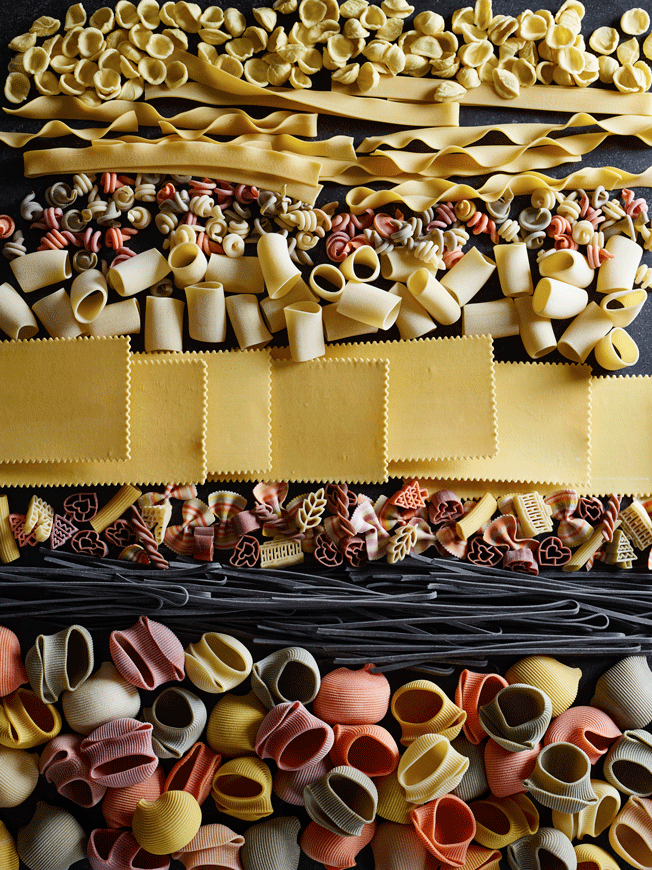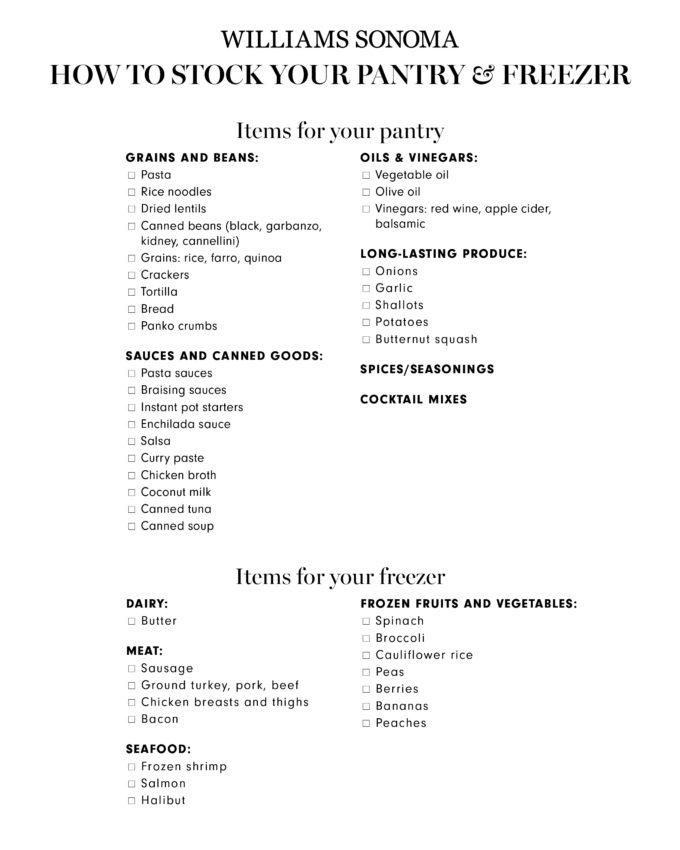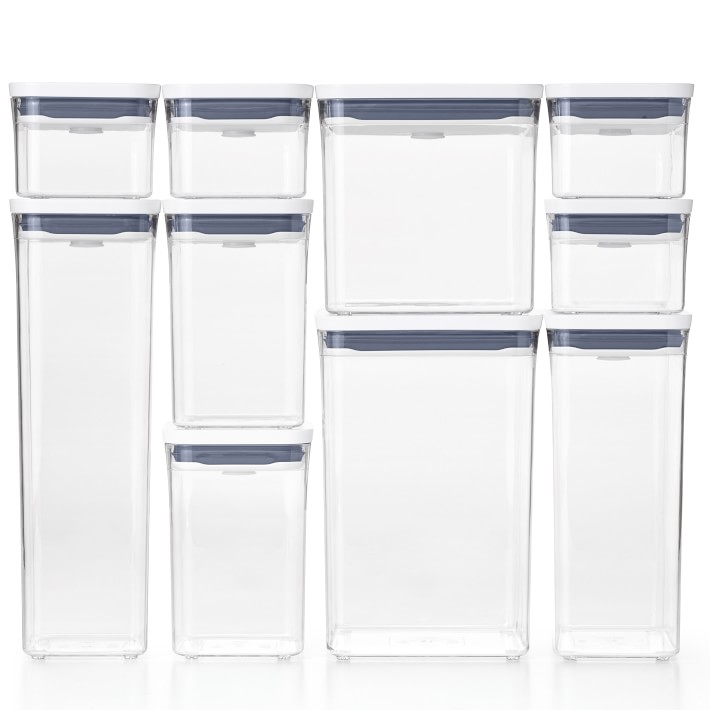
OK, to start: Take a deep breath. You can do this. Whether you’ve already dashed to the store, are waiting on a delivery, or have a store left to hit—consider social distancing if you must go out!—stocking a pantry is front of mind for everyone right now. As more of us gather at home, it’s time to think about what we eat and what we need. Here are tips on what to do and what to consider as you stock up.
1. Look at What You Have. Then Look Again.
Start your list on your phone or on paper and add or delete things as you find them or see that they’re missing. As you go, check expiration dates and chuck whatever has passed its prime. Make sure those eggs and yogurt are still good and that no moldy bread or lemons lurk in the corners of your fridge.
2. Break Your List Into Categories
It can all feel overwhelming unless you break it into manageable groups. However your brain works is fine: If you need things divided into “Comfort Baking/ Big Stews/ Casseroles/ Canned Fish and Beans,” that’s okay. If a more classic “Pantry/ Fridge/ Freezer/ Storage” works for you, great. Buy what you need for at least two weeks and maybe a month; think about your comfort level.
3. Clean and Organize
It’s time. If the pantry is bare or there is a thin mist of flour everywhere, consider whether deep cleaning could help you have more peace of mind. Every little bit of stress relief counts these days. And if you have a few spare dollars, invest in clear storage containers for the things you use most, like flour, sugar, cereal, nuts, et cetera. It’s fair to say that if you can’t see the food in order to use it readily, it might go bad.
4. Consider How Your Household Eats
Is yours a five-blocks-of-cheese-every-two-weeks household? (No judgment!) Buy 10. Will your baby scoff at anything other than premium smoked salmon? Baby has good taste. Can you try out dried beans for the first time, since they take up less room, are cheaper, and go farther? Give it a whirl. (And remember that you can cook them from dried in an hour in the Instant Pot!)
5. Think About Kitchen Real Estate
Consider that your refrigerator and freezer only have so much space. Unless you’re in an Arctic part of the world or have a separate mini-fridge, it’s something to keep in mind. You’ll want to accommodate meat (if you eat it), vegetables, and fruit in the freezer, plus stocks, seafood and prepared foods. Think about the shelf-stable alternatives to some of these things: Can you invest in some canned fish? More beans, as a protein backup? Buy some vitamins in case you run low on veggies? Do what works for you. For the fridge, remember that you can’t buy everything in bulk, unless your family really eats three containers of yogurt weekly.
As you stock up, consider that you’ll eat these things down the line, no matter what happens—but you also don’t want to take so much that you create scarcity. (That is currently looking unlikely!) Be intentional with the food you have on hand. Cooking a nice meal for yourself or sharing one with family is among the best ways to de-stress and enjoy your time at home.

Here’s our general list of things to keep handy. Cook well out there.



4 comments
That was really a good way for learners who are going to take a long way for making good foods.
Its really good to keep this stuff at home, if ones really wanna cook great that the perfect one i need still finding it as an good option.
thanks you, your website share good posts which I like to read.
There is nothing on the shelves where I live and I just moved so I didn’t have much in my pantry.